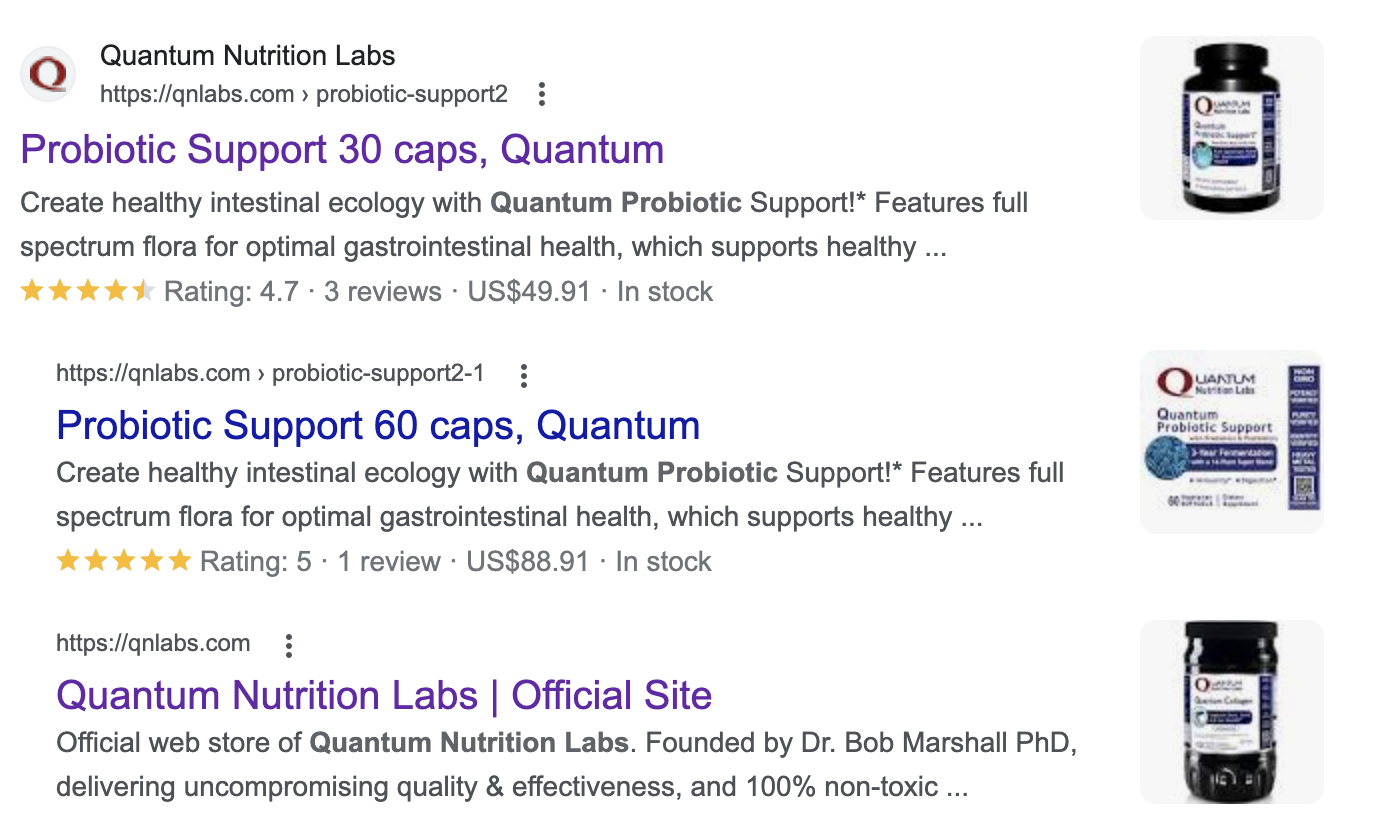


The Google search engine results page (SERP) can contain links, images, snippets, maps, questions and answers, and more. The search results depend on your search query and search intent.
SEO, E-E-A-T, search intent, content quality, page experience, and customer demographics influence Google SERP content. The better you understand SERPs, the easier it is to create content, paid ads, and websites that rank at the top of the results page.
The search query and intent determines the types of ads Google displays.
For example, asking “how do I find keywords for my business” returns text-based ads that include a URL, title link, and description.

But a search query and intent that tells Google the customer is ready to buy “keto cookie dough” returns image-based ads, including the product image and shopping details.

In both examples, the top ranking paid ads were optimized for:
Google defines organic search results as: a free listing in Google Search that appears because it’s relevant to someone’s search terms.
Organic search results typically display directly below paid search results or as the top search result. These results make up the majority of the SERP content, displaying up to 60 search results if you’re searching on your computer.
Every organic search result includes a URL, title, and description. And depending on the search query and intent, may include images, videos, maps, and relevant search queries or additional helpful information.
For example, this screenshot shows the organic search results for the branded search query phrase “quantum nutrition labs probiotic”. These organic search results display directly below paid search results for probiotics.
And the less specific search query below asking “what are supplements” generates a different organic search result. Notice that this organic search result has the top position in the SERP.

Googles uses ranking factors to determine what it displays and the order of the organic search results.
People Also Ask boxes typically display below paid search results and below the first organic search result. Google populates this rich snippet feature with questions related to the original search query and intent.
Every People Also Ask section includes four questions. More questions are added as you click and expand a question. Google adds follow-on questions based on the question you expand.
For example, here is the People Also Ask section for the search query “what are supplements,” including the organic search result directly below these questions.

And below is what happens when I expanded the first question in the People Also Ask section.

Along with answering the question and highlighting the most important information, Google includes an additional search query and adds more questions to the People Also Ask section.
Make sure you pay attention to the additional search queries Google displays. This tells you a lot about customer search habits and the types of information they want.
Open Google and type your keyword phrase.
Where do you rank? What are the questions in the People Also Ask section? Who is winning the top paid search result and organic search result? What do the search results look like – are there images, maps, videos? Make sure you have the content formats that Google displays.
NOTE: WholeFoods Magazine is a business-to-business publication. Information on this site should not be considered medical advice or a way to diagnose or treat any disease or illness. Always seek the advice of a medical professional before making lifestyle changes, including taking a dietary supplement. The opinions expressed by contributors and experts quoted in articles are not necessarily those of the publisher or editors of WholeFoods.
